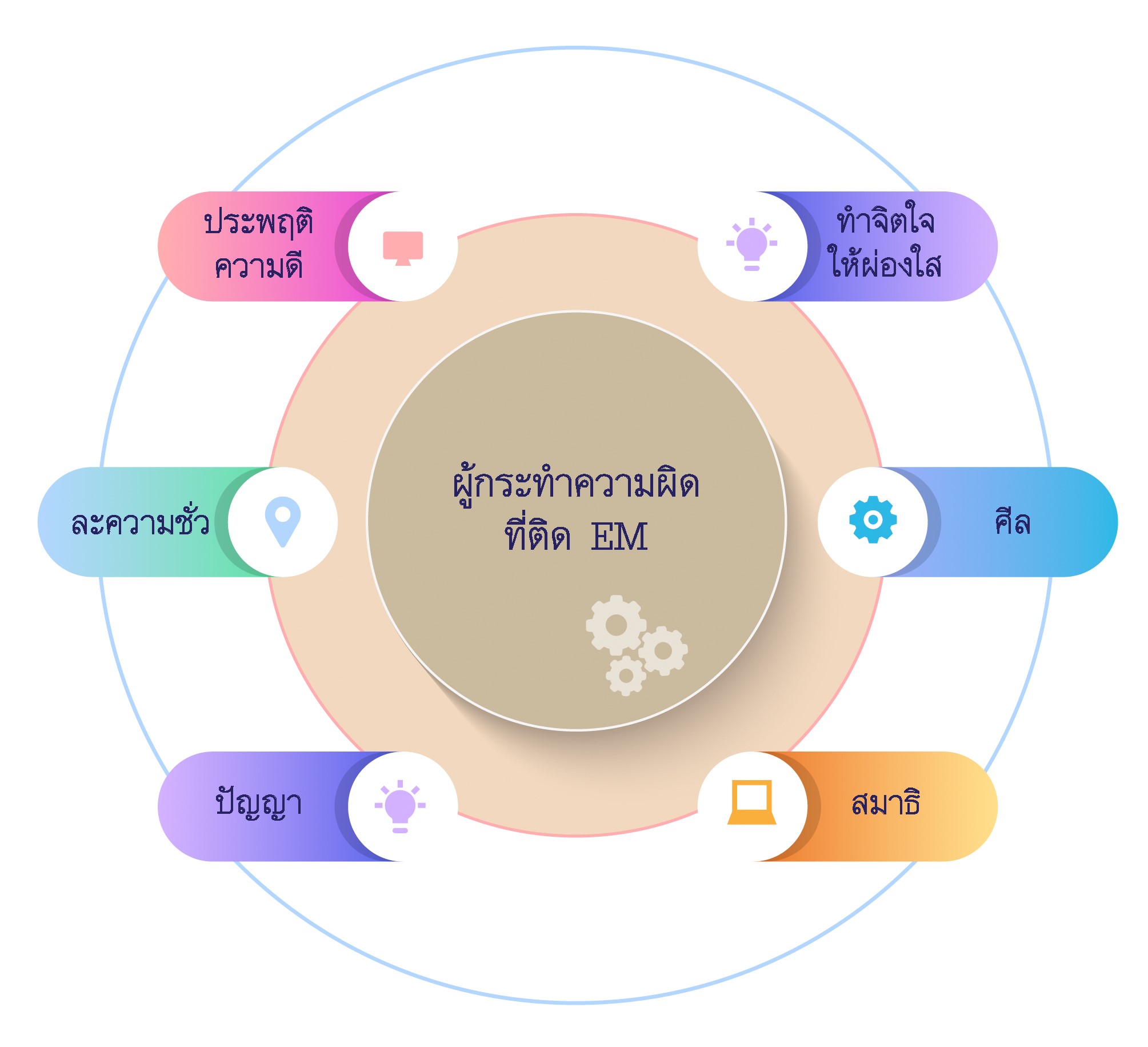A Model for Integrating Buddhist Ethics with the use of Electronic Devices to Track Offenders in the Prevention of Repeat Offences of Probation Office
Main Article Content
Abstract
The purposes of this research were 1) to study Buddhist ethics used in integration with electronic devices to track offenders, 2) to study the use of electronic devices to track offenders, 3) to create an integrated model of Buddhist ethics and the use of electronic devices to track offenders to prevent repeat offenses of the Probation Office. This study was documentary research by collecting data from primary and secondary documents. The obtained data were descriptively analyzed according to the inductive principle.
The research results were as follows:
1. Buddhist ethics used in integration with electronic devices to track offenders is a principle that governs human behavior to make humans aware of the virtues, namely, Ovadapātimokkha, which consists of refraining from doing all bad deeds, doing good deeds, and brightening the mind and Tisikkhā consisting of Sīla-Sikkhā, Citta-Sikkhā and Paññā-Sikkhā.
2. Using electronic devices to track offenders is the use of electronic signaling devices attached to offenders who have been temporarily released to follow behavior to check the movement or position of the probationer according to the Ministerial Regulations in pursuing a probationer under the conditions of the court's release to live outside prison.
3. The model of integrating Buddhist ethics with the use of electronic devices to track offenders to prevent recidivism of the Probation Office is the application of Ovadapātimokkha and Tisikkhā to train offenders before installing electronic devices to create awareness for offenders to have morals, ethics, know how to restrain themselves, not to repeat the offense.
Article Details

This work is licensed under a Creative Commons Attribution-NonCommercial-NoDerivatives 4.0 International License.
เพื่อให้เป็นไปตามกฎหมายลิขสิทธิ์ ผู้นิพนธ์ทุกท่านต้องลงลายมือชื่อในแบบฟอร์มใบมอบลิขสิทธิ์บทความ ให้แก่วารสารฯ พร้อมกับบทความต้นฉบับที่ได้แก้ไขครั้งสุดท้าย นอกจากนี้ ผู้นิพนธ์ทุกท่านต้องยืนยันว่าบทความ ต้นฉบับที่ส่งมาตีพิมพ์นั้น ได้ส่งมาตีพิมพ์เฉพาะในวารสาร วิชาการธรรม ทรรศน์ เพียงแห่งเดียวเท่านั้น หากมีการใช้ ภาพหรือตารางของผู้นิพนธ์อื่นที่ปรากฏในสิ่งตีพิมพ์อื่นมาแล้ว ผู้นิพนธ์ต้องขออนุญาตเจ้าของลิขสิทธิ์ก่อน พร้อมทั้ง แสดงหนังสือที่ได้รับการยินยอมต่อบรรณาธิการ ก่อนที่บทความจะได้รับการตีพิมพ์References
กรมคุมประพฤติ กระทรวงยุติธรรม. (2550). ภารกิจกรมคุมประพฤติ. กรุงเทพฯ: กรมคุมประพฤติกระทรวงยุติธรรม.
จุมพล พูลภัทรชีวิน และคณะ. (2549). การวิจัยและพัฒนากระบวนการสร้างความดีมีคุณธรรม. กรุงเทพฯ: ศูนย์ส่งเสริมและพัฒนาพลังแผ่นดินเชิงคุณธรรม สำนักงานบริหารและพัฒนาองค์ความรู้ (องค์การมหาชน).
บุรฉัตร ปราโมช ณ อยุธยา. (2556). การนำอุปกรณ์อิเล็กทรอนิกส์มาใช้ควบคุมเด็กและเยาวชนที่กระทำความผิดอาญาในประเทศไทย. กรุงเทพฯ: ม.ป.ท.
ภัควรินทร์ พิชญะพงศ์สกุล และคณะ. (2562). โอกาสและข้อจำกัดในการนำอุปกรณ์อิเล็กทรอนิกส์ติดตามตัว (EM) มาใช้กับผู้กระทำความผิดที่เป็นเยาวชน. (รายงานการวิจัย). กรุงเทพฯ: สถาบันวิจัยและพัฒนารพีพัฒนศักดิ์.
วงศกร เพิ่มผล. (2555). ศีล 5 มิติอารยธรรมสากล. (วิทยานิพนธ์ศาสนศาสตรดุษฎีบัณฑิต). นครปฐม: มหาวิทยาลัยมหามกุฏราชวิทยาลัย.

